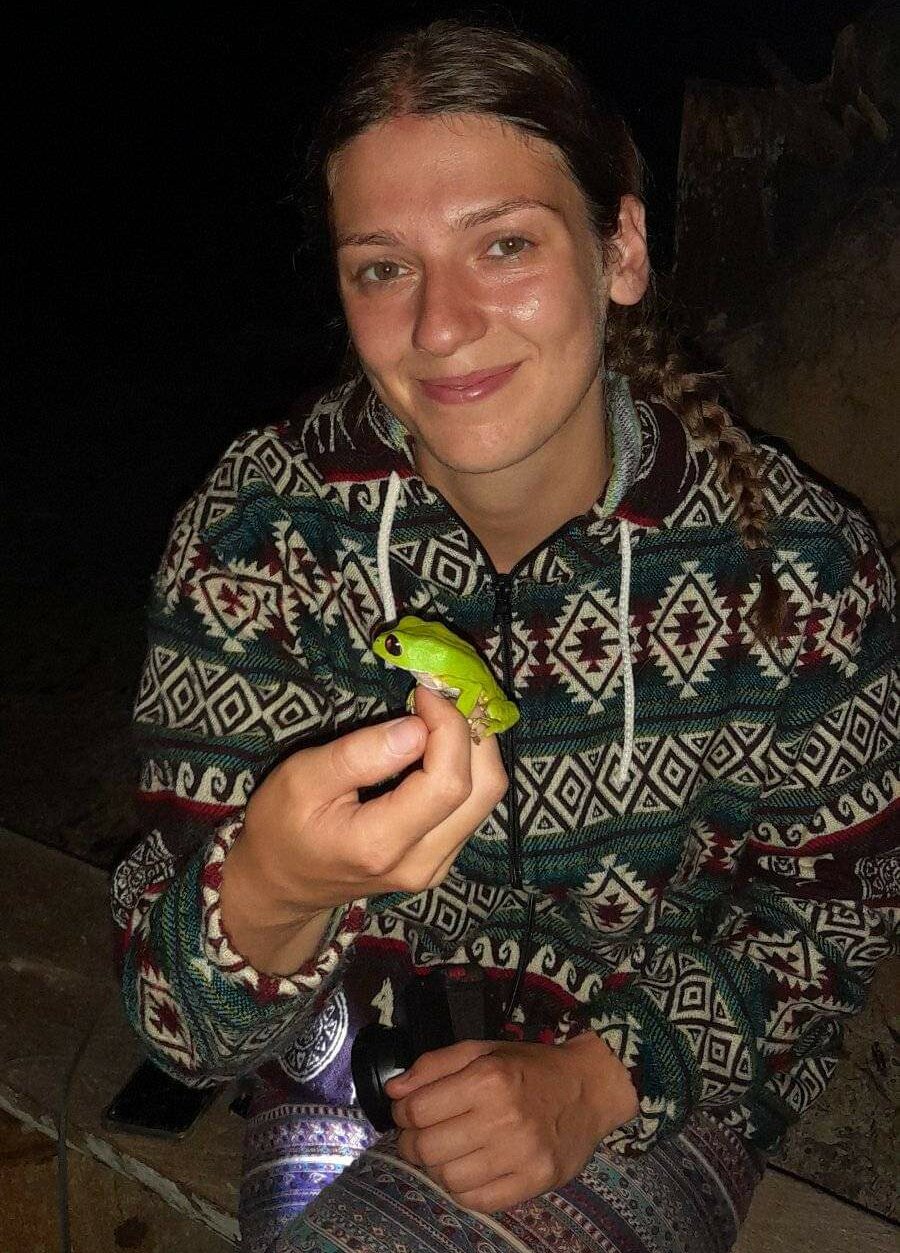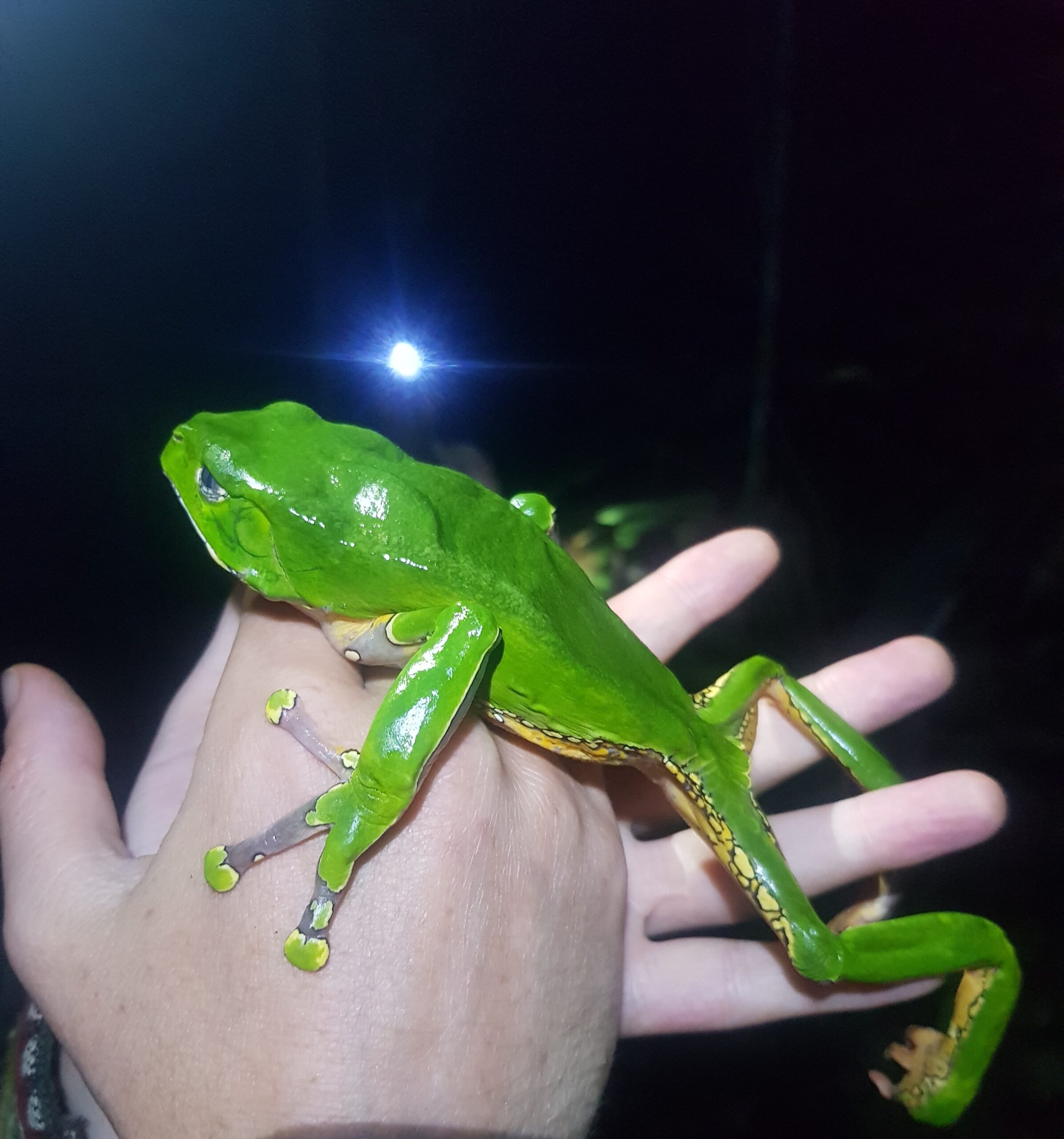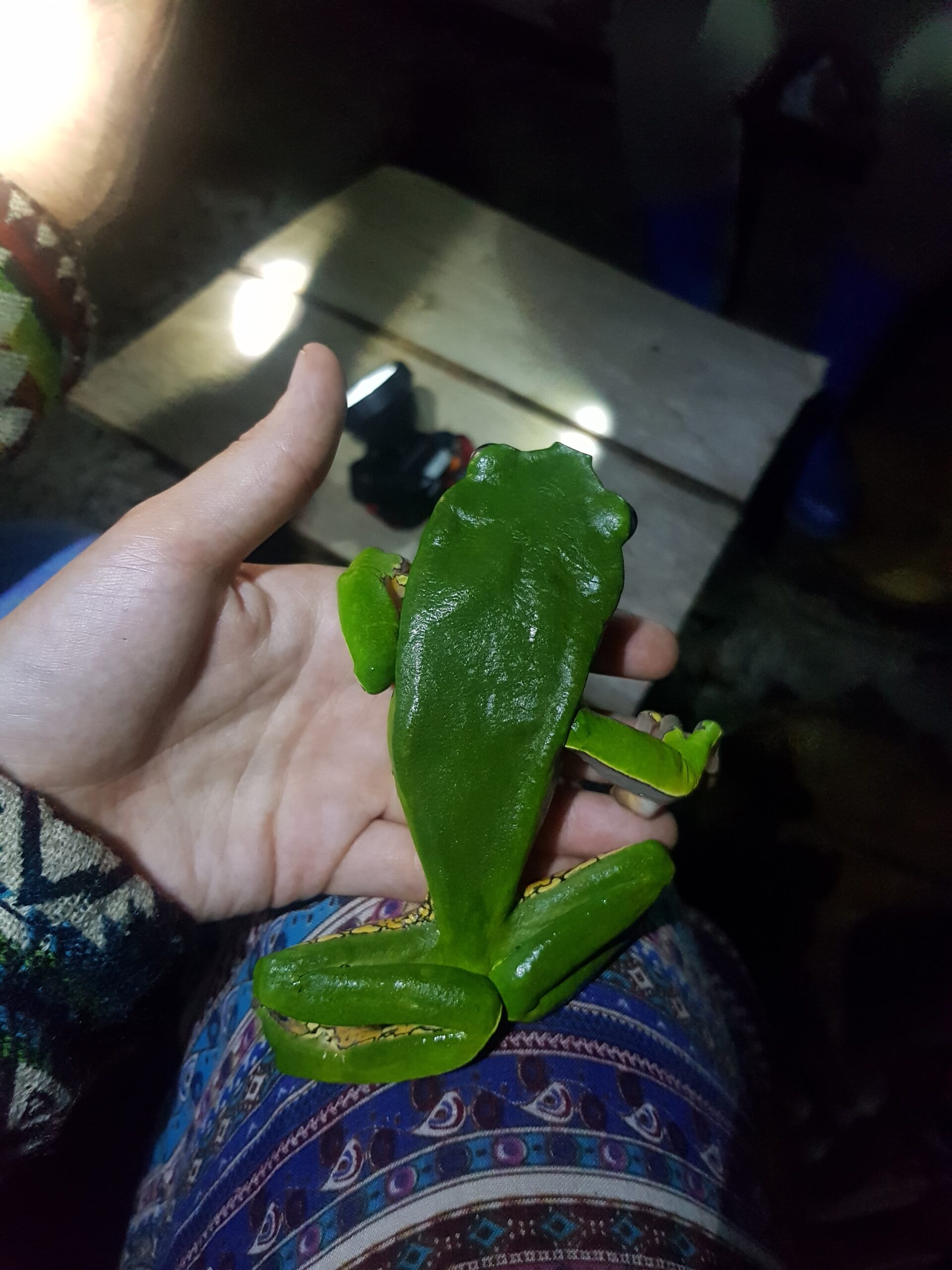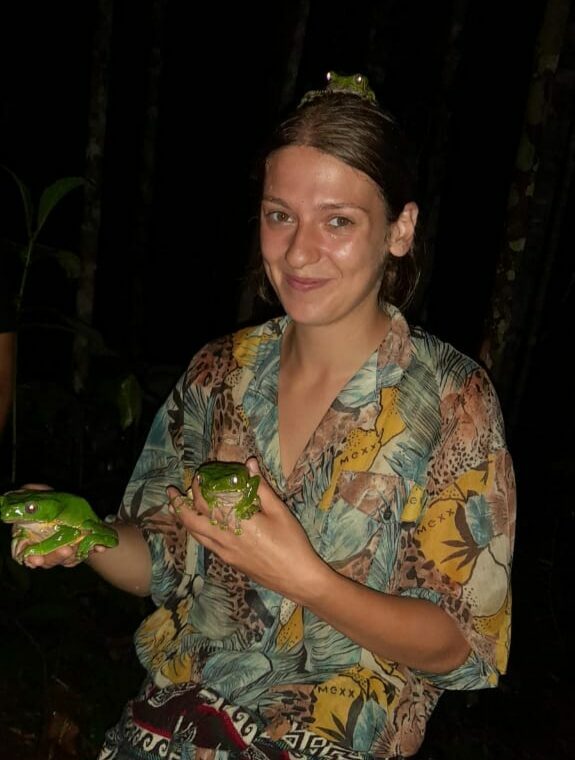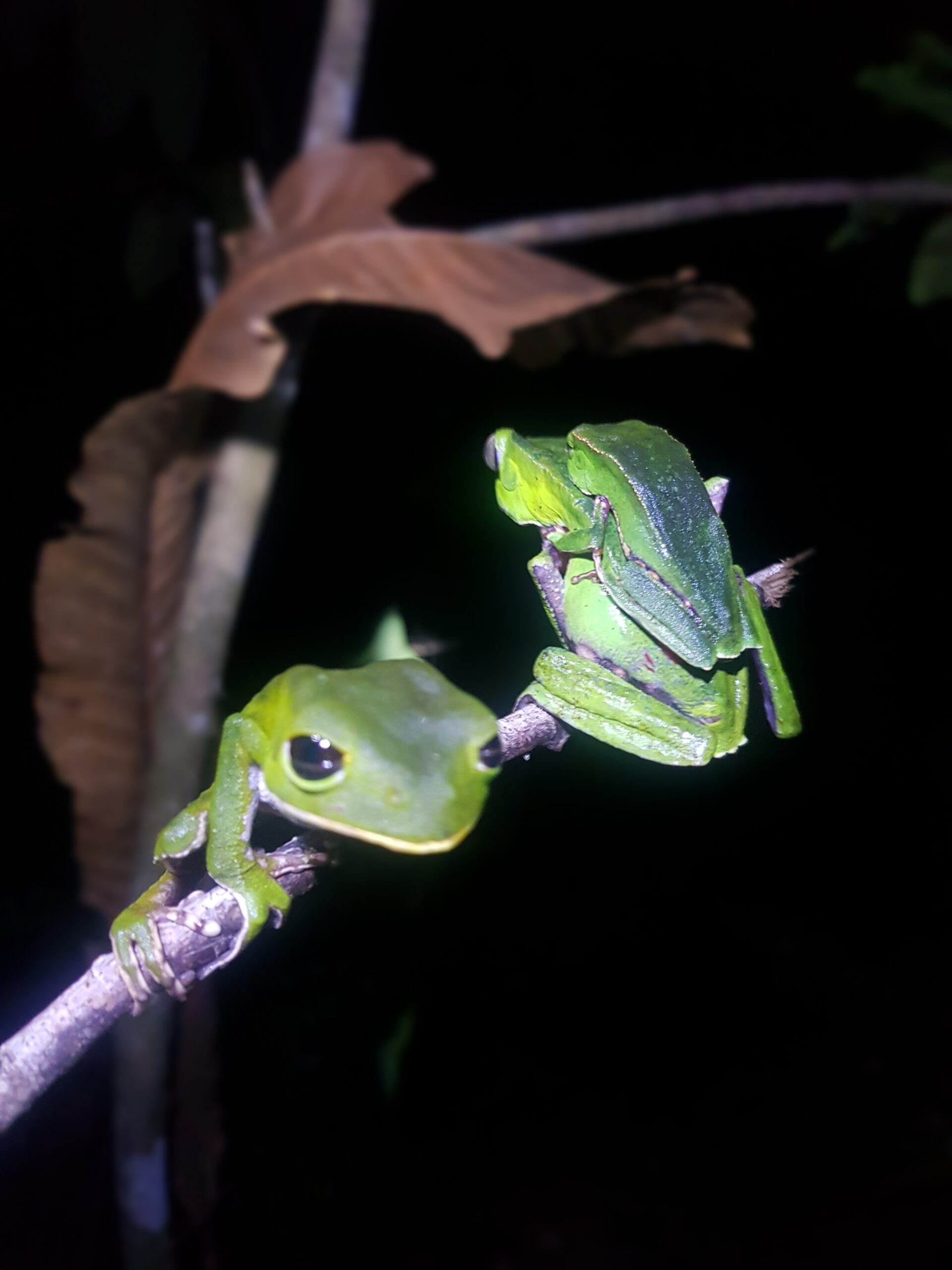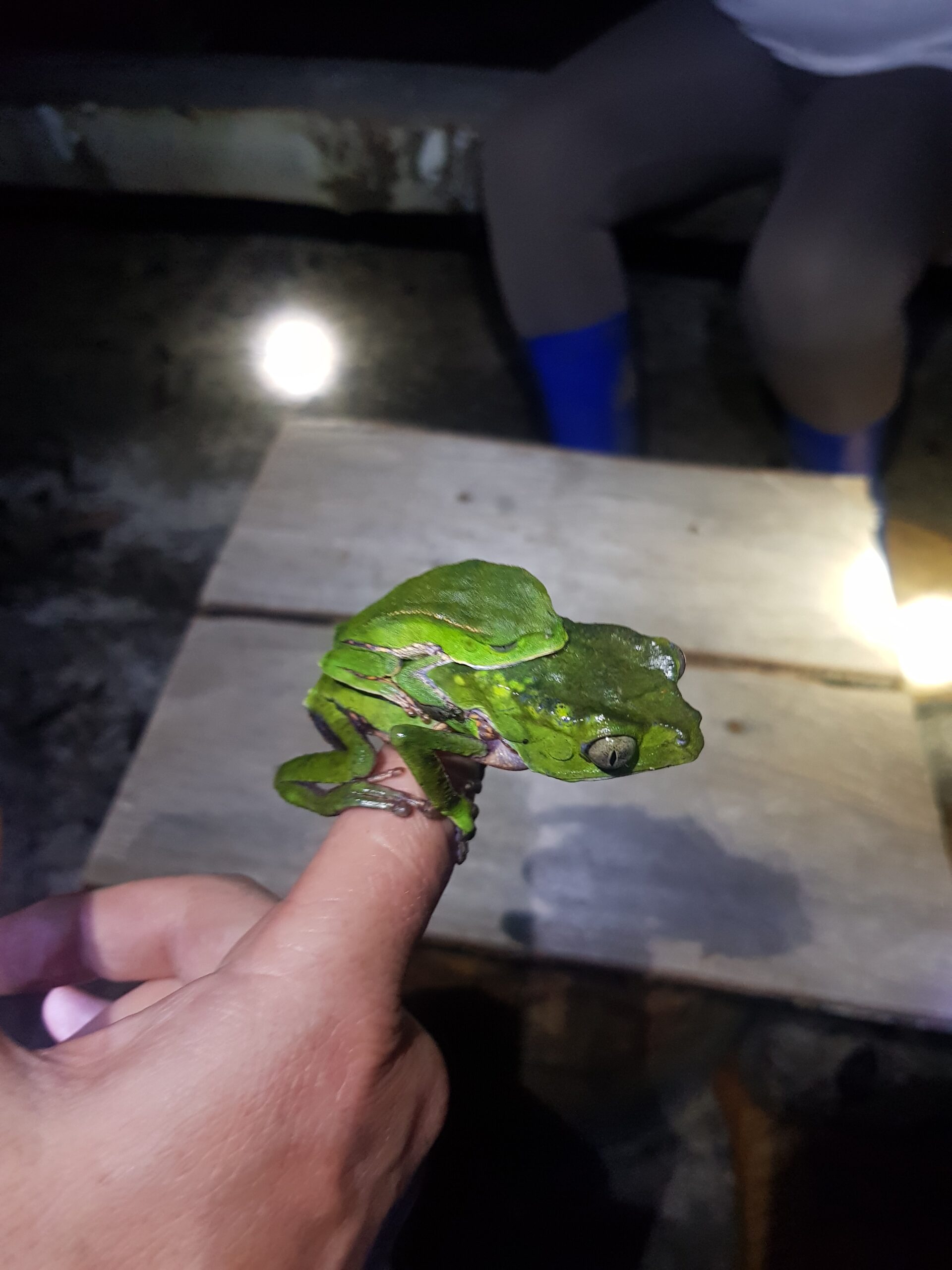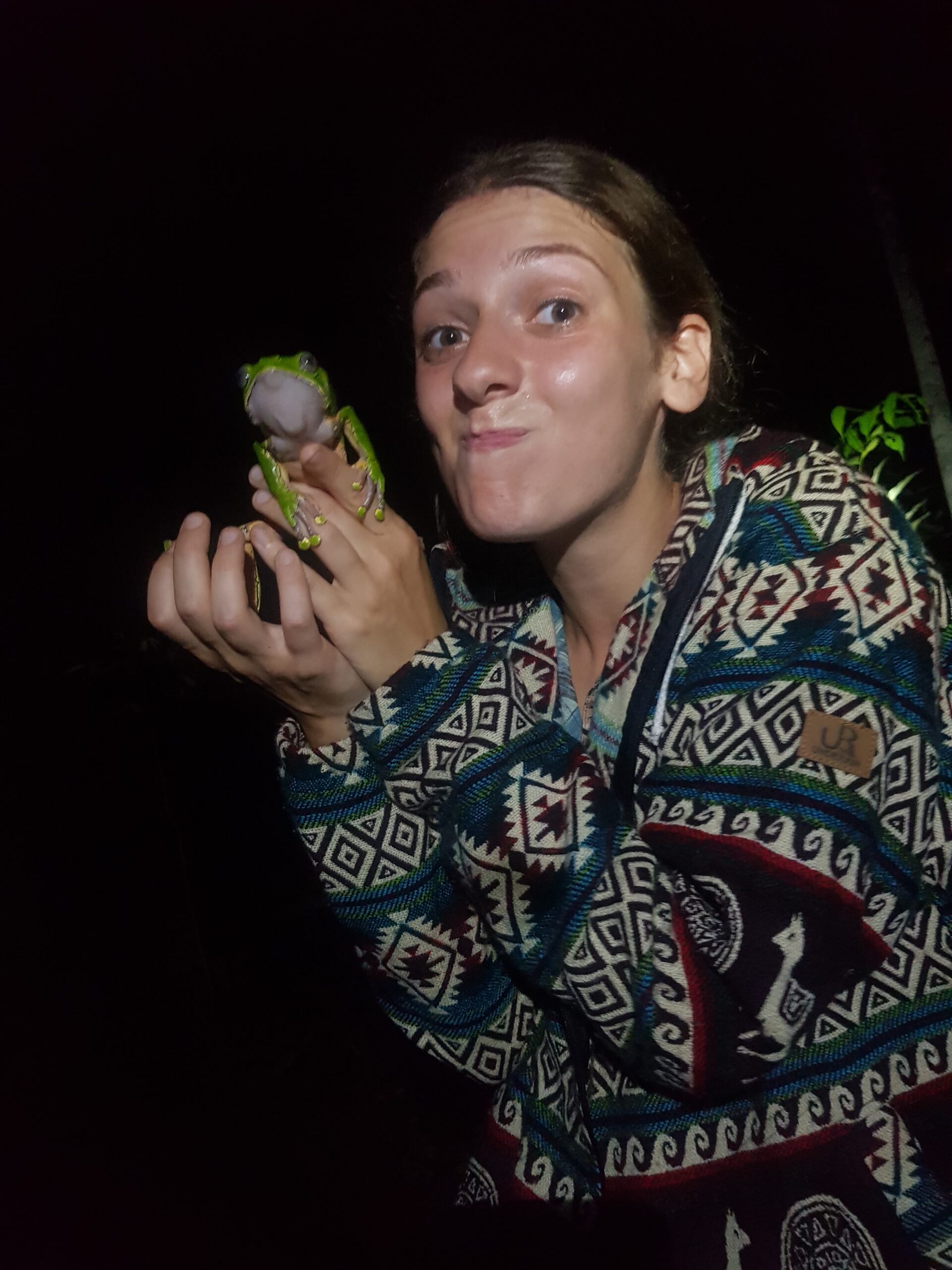Meeting the Kambo Frog: A journey into the heart of the jungle.
There is a moment, for those who choose to become practitioners, that marks a threshold: the encounter with the Kambo Frog. It is not just a ritual step, but a rite of passage. This is when the medicine ceases to be only a name, or a stick held in one’s hands, and becomes a living being with whom to establish a bond of respect, responsibility, and listening.
Through intense ceremonies and inner challenges, I began to feel a powerful call: to meet the Frog, to approach her. It wasn’t mere curiosity but the need to answer essential questions: does she suffer during the secretion harvest? Is she harmed? What is the right, ethical, respectful way? With these questions packed in my bag, I set out on the road to the Peruvian jungle.
The first steps were not easy. In Iquitos, I witnessed the darker side of the medicine: frogs locked in cages, shown to tourists, artificially stimulated to produce secretion. A painful and heartbreaking reality that revealed how this sacred medicine can be abused when reduced to merchandise. Yet that very pain strengthened my search for authenticity. I walked deeper into the forest until I was welcomed by a local family at their healing center, Kambo Wasi. Surrounded by the dense green of the jungle and by frogs living freely, I finally found the heart of what I was looking for.
3. How the medicine is collected: ancestral technique
There I witnessed the traditional practice. The frog is called by imitating her song, usually at dawn or at night, when she comes down from the trees. She is gently held, and her limbs — wrists and ankles — are tied with natural fibers, stretched towards four points, forming an X.
This position serves two purposes: it exposes not only the back but also the legs, where much of the secretion is produced, making collection easier and more complete; and it leaves small white marks that last for two to three months, a natural sign that the frog should not be harvested again until she has fully regenerated. This ensures the animal is never overused.
The secretion is collected only in its first production, the strongest one, gently scraped onto small sticks and left to dry. Afterwards the frog is released and returned to her tree, unharmed.
4. The ethics of harvest: more than a technique, a sacred pact
This is not just a practical procedure but a true pact. The tribes know the Frog is sacred and that harming her would break an equilibrium not only ecological but spiritual. That is why ethics are essential: harvesting only what is needed, leaving the frog her natural protection, respecting the marks as a language of pause and recovery, relying on trustworthy sources and communities who safeguard the tradition. To use this medicine without respect is to strip it of its soul.
From my first close encounter with the frog, I felt something beyond technique or observation. Watching her move, climb, and look at me with her enormous, luminous eyes, I sensed a living, curious, almost playful presence. Holding her in my hands was not about grasping an animal but opening a silent dialogue, made of breath and presence. In that moment, I understood that connection with the Spirit of the Frog is what allows us to bring this medicine into the world in the right, rooted, ethical way.
As you read these lines, I hope you can feel yourselves there with me in the jungle: the dense, humid air clouding your thoughts, the rustle of leaves, the distant calls of birds, the natural drums of the forest. This is where the medicine lives, not only as secretion on a stick but as a sacred being who looks at you and asks: how will you use what I give you?
This encounter marked a transformation for me: from receiver to custodian, from seeker to one committed to respect. This, perhaps, is the true meaning of being a practitioner: not only to transmit a cure but to walk in alliance with the forest and its spirits.
I also carry in my heart the memory of the father of the Kambo Wasi family, who welcomed me with generosity and who has since passed on. It is thanks to guardians like him that this medicine continues to live in its most authentic form.
Until the next adventure,
Alessandra
